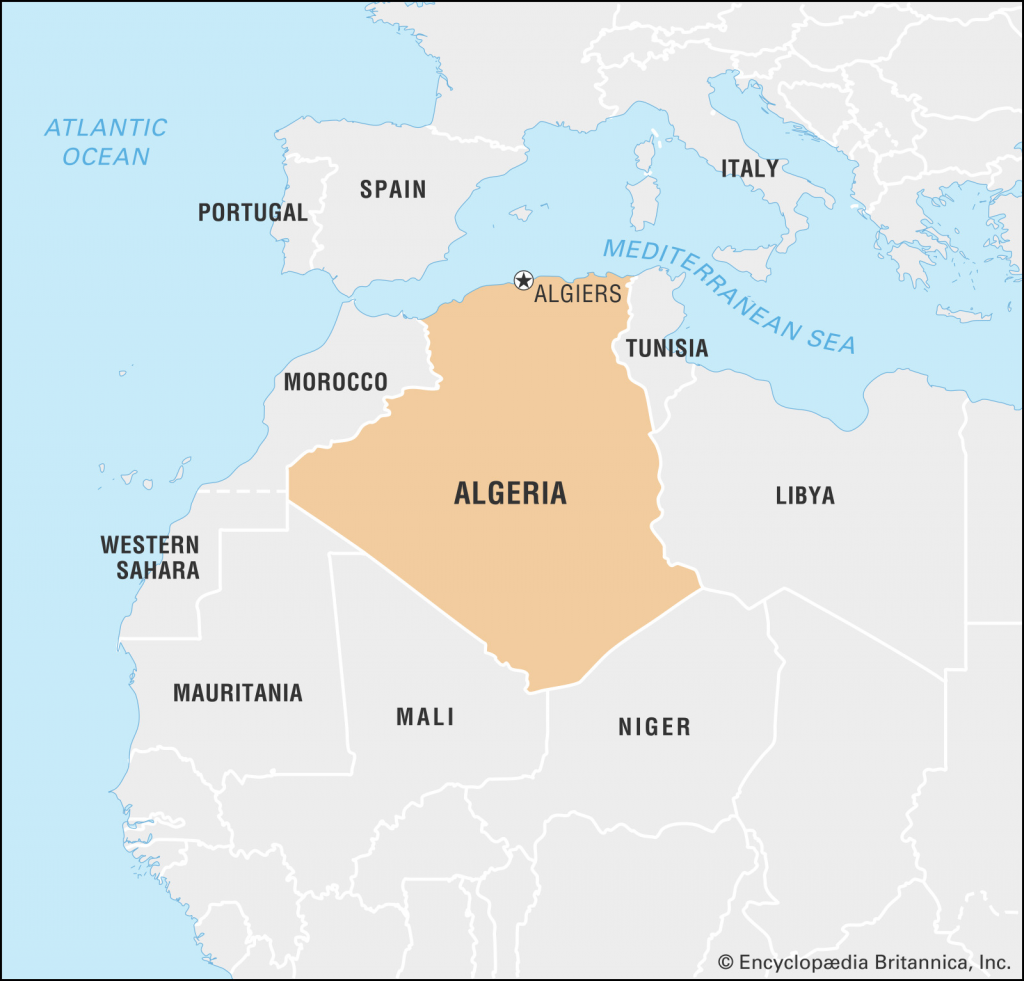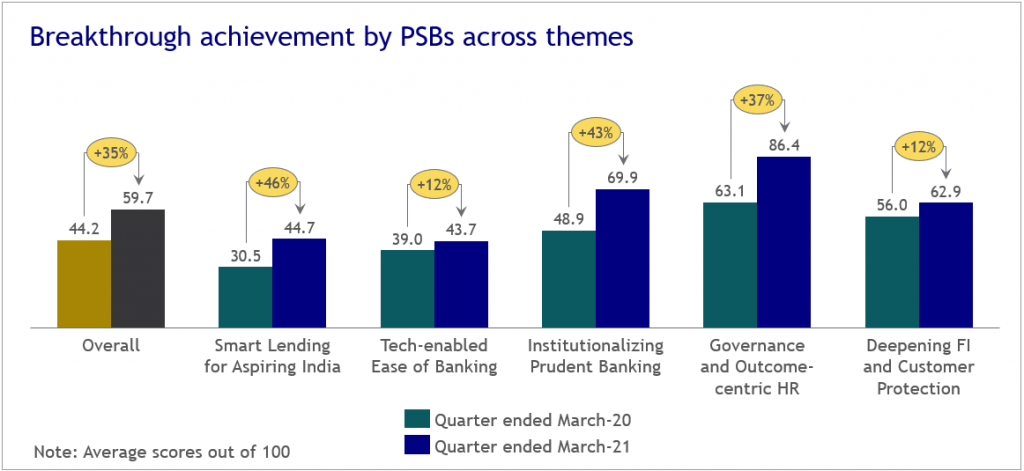Contents
- Algeria cuts diplomatic ties with ‘hostile’ Morocco
- FM launches EASE 4.0, reviews performance of PSBs
- Centre raises fair price of sugar cane
- ̌Fukushima nuclear water to be released via undersea tunnel
Algeria cuts diplomatic ties with ‘hostile’ Morocco
Context:
Algeria’s Foreign Minister said that his country has severed diplomatic relations with Morocco due to “hostile actions”, following months of resurgent tensions between the North African rivals.
Relevance:
Prelims, GS-I: Geography (Maps), GS-II: International Relations
Dimensions of the Article:
- About Algeria
- About Morocco
About Algeria
- Algeria is a country in the Maghreb region of North Africa.
- It is the largest country by total area in Africa, and by extension, the Arab world.
- It is bordered to the northeast by Tunisia; to the east by Libya; to the southeast by Niger; to the southwest by Mali, Mauritania, and Western Sahara; to the west by Morocco; and to the north by the Mediterranean Sea.
- The country has a semi-arid geography, with most of the population living in the fertile north and the Sahara dominating the geography of the south.
- The capital and largest city is Algiers, located in the far north on the Mediterranean coast.

About Morocco
- Morocco is the northwesternmost country in the Maghreb region of North Africa.
- It overlooks the Mediterranean Sea to the north and the Atlantic Ocean to the west, and has land borders with Algeria to the east, and the disputed territory of Western Sahara to the south.
- It has the fifth-largest economy in Africa and wields significant influence in both Africa and the Arab world.
- Morocco claims ownership of the non-self-governing territory of Western Sahara, which it has designated its Southern Provinces.
- In 1975, after Spain agreed to decolonise the territory and cede its control to Morocco and Mauritania.
- Today, Morocco occupies two-thirds of the territory, and efforts to resolve the dispute have thus far failed to break the political deadlock.

-Source: The Hindu
FM launches EASE 4.0, reviews performance of PSBs
Context:
Finance Minister Nirmala Sitharaman undertook the annual performance review of the public sector banks (PSBs) and launched the EASE 4.0 or Enhanced Access and Service Excellence – a common reform agenda for PSBs aimed at institutionalising clean and smart banking.
Relevance:
GS-III: Indian Economy (Banking Sector)
Dimensions of the Article:
- What is Enhanced Access and Service Excellence (EASE)?
- Editions of EASE
- About Ease 4.0
What is Enhanced Access and Service Excellence (EASE)?
- First launched in January 2018 jointly by the government and PSBs, Enhanced Access and Service Excellence aim at institutionalizing clean and smart banking. It was commissioned through Indian Banks’ Association and authored by the Boston Consulting Group.
- EASE is based on the recommendations made at the PSB Manthan held in November 2017.
- EASE Reforms Index: The Index measures performance of each PSB on 120+ objective metrics. The goal is to continue driving change by encouraging healthy competition among PSBs.
- PSBs have done well and come out of Prompt Corrective Action (PCA) despite service extended during the pandemic. PCA is a framework under which banks with weak financial metrics are put under watch by the RBI.
- PSBs have recorded phenomenal growth over four quarters since the launch of EASE 3.0 Reforms Agenda in February 2020.

Editions of EASE
- EASE 1.0: The report manifested notable improvement in PSB performance in the resolution of Non Performing Assets (NPAs) transparently.
- EASE 2.0: Build on the foundations of EASE 1.0, it introduced new action points and focussed on six themes of customer responsiveness– responsible banking, credit offtake, PSBs as Udyami Mitra, deepening financial inclusion and digitalisation, and developing personnel for brand PSB.
- EASE 3.0: Launched in February 2020, it focussed on enhancing the ease of banking in all customer experiences, using technology, alternate data and analytics.
About Ease 4.0
- EASE 4.0 commits PSBs to tech-enabled, simplified and collaborative banking to further the agenda of customer-centric digital transformation.
- Major Themes proposed under EASE 4.0:
- 24×7 Banking: Under EASE 4.0, the theme of new-age 24×7 banking with resilient technology has been introduced to ensure uninterrupted availability of banking services.
- Focus on North-East: Banks have also been asked to come up with specific schemes for the North-East.
- Bad Bank: The proposed bad bank is very close to getting a licence.
- Raising Funds Outside the Banking Sector: With changed times, now industries have the option of raising funds even from outside the banking sector.
- Leveraging Fintech Sector: Fintech (Financial Technology), one such sector that can provide technological help to banks as well as can benefit from help from the banking sector.
- Export Promotion: Banks will be urged to work with state governments to push the ‘one district, one export’ agenda.

-Source: The Hindu
Centre raises fair price of sugar cane
Context:
The Central government has hiked the minimum price that sugar mills must pay to cane farmers setting the fair and remunerative price (FRP) at ₹290 a quintal for the 2021-22 sugar season.
Relevance:
GS-III: Agriculture (Agricultural Pricing and Marketing, Food Security)
Dimensions of the Article:
- Sugar Industry in India and its isssues
- What is (Fair and Remunerative Price (FRP) for Sugarcane?
- What are the Concerns behind FRP for Sugarcane
- MSP for Sugar
Click Here to read about Sugar Industry in India and Payment Arrears
What is (Fair and Remunerative Price (FRP) for Sugarcane?
- FRP is fixed under a sugarcane control order, 1966 and it is the minimum price that sugar mills are supposed to pay to the farmers.
- However, states determine their own State Agreed Price (SAP) which is generally higher than the FRP.
Factors considered for FRP of Sugarcane
- The amended provisions of the Sugarcane (Control) Order, 1966 provides for fixation of FRP of sugarcane having regard to the following factors:
- cost of production of sugarcane;
- return to the growers from alternative crops and the general trend of prices of agricultural commodities;
- availability of sugar to consumers at a fair price;
- price at which sugar produced from sugarcane is sold by sugar producers;
- recovery of sugar from sugarcane;
- the realization made from the sale of by-products viz. molasses, bagasse, and press mud or their imputed value;
- reasonable margins for the growers of sugarcane on account of risk and profits.
What are the concerns behind FRPs for Sugarcane?
- FRPs would adversely affect the financial health of the sugar factories in times of low sugar prices where the companies has to pay the MSP even though the sugar prices are low.
- The FRPs are not market-based and are priced at artificially inflated levels by governments.
- This, in turn, puts pressure on the sugar mills who have to purchase the crop from the farmers at these inflated FRPs.
- And while the government has raised ethanol prices dramatically to help sugar mills find an alternative source of demand to pay for the excessively priced sugarcane, once oil prices fall to reasonable levels, oil PSUs won’t be able to afford the ethanol.
Minimum Selling Price (MSP) for Sugar
- The price of sugar is market-driven & depends on the demand & supply of sugar.
- However, with a view to protecting the interests of farmers, the concept of MSP of sugar has been introduced since 2018.
- MSP of sugar has been fixed taking into account the components of Fair & Remunerative Price (FRP) of sugarcane and minimum conversion cost of the most efficient mills.
Basis of price determination
- With the amendment of the Sugarcane (Control) Order, 1966, the concept of Statutory Minimum Price (SMP) of sugarcane was replaced with the Fair and Remunerative Price (FRP)’ of sugarcane in 2009-10.
- The cane price announced by the Central Government is decided on the basis of the recommendations of the Commission for Agricultural Costs and Prices (CACP).
- This is done in consultation with the State Governments and after taking feedback from associations of the sugar industry.
-Source: The Hindu
Fukushima nuclear water to be released via undersea tunnel
Context:
The operator of the wrecked Fukushima nuclear power plant said that there are plans to build an undersea tunnel so that massive amounts of treated but still radioactive water can be released into the ocean about 1 km away from the plant to avoid interference with local fishing.
Relevance:
GS-III: Science and Technology, GS-III: Environment and Ecology (Waste Management)
Dimensions of the Article:
- Types of Nuclear Waste
- About Nuclear Waste Disposal
- About the Fukushima Incident
- Treatment of Fukushima water
Types of nuclear waste
- Low-level waste is made up of lightly-contaminated items like tools and work clothing from power plant operation and makes up the bulk of radioactive wastes. It represent 90% of the total volume of radioactive wastes, but contain only 1% of the radioactivity.
- Intermediate-level wastes might include used filters, steel components from within the reactor and some effluents from reprocessing.
- High-level wastes from nuclear generation, but they contain 95% of the radioactivity arising from nuclear power.
About Nuclear Waste Disposal
- Intermediate- and low-level wastes are disposed of closer to the surface, in many established repositories. Low-level waste disposal sites are purpose built, but are not much different from normal municipal waste sites.
- Low-level and intermediate wastes are buried close to the surface.
- High-level wastes require shielding and cooling, low-level wastes can be handled easily without shielding. High-level wastes can remain highly radioactive for thousands of years. They need to be disposed of deep underground in engineered facilities built in stable geological formations.
- The regular monitoring is done as per the requirements which are in line with the guidelines of International Atomic Energy Agency (IAEA).
- The monitoring of various environmental matrices such as air, water, soil etc., in and around the waste disposal facilities is carried out by independent Environmental Survey Laboratories (ESL) of Bhabha Atomic Research Centre (BARC) which are stationed at all the nuclear sites.
About the Fukushima Nuclear Disaster
- A nuclear disaster happened at Fukushima Daiichi Nuclear Power Plant on Japan’s coast in March 2011. An earthquake of magnitude 9.0 Ritcher scale caused a tsunami that flooded the critical control equipment of the nuclear power station and caused a meltdown.
- The Tokyo Electric Power Company or TEPCO is now dealing with a new issue of radioactive water piling up at the site. Japan is planning to release the water into the sea . Tokyo Electric Power Company Holdings Inc would begin the process of pumping out the water in about 2 years after the treatment process is completed. The process is expected to take decades to complete.
About the treatment of Fukushima Water
- The water needs to be filtered again to remove harmful isotopes and will be diluted to meet international standards before any release.
- The water will be filtered again to remove the isotopes leaving behind only tritium, which is a radioactive isotope of hydrogen hard to separate from water.
- Tepco would dilute the water until tritium level falls below the regulatory limits. It would be then pumped directly into the ocean.
- Tritium is considered to be less harmful to humans than other radioactive materials. Once released, the process would take 10 years to complete.
-Source: The Hindu




